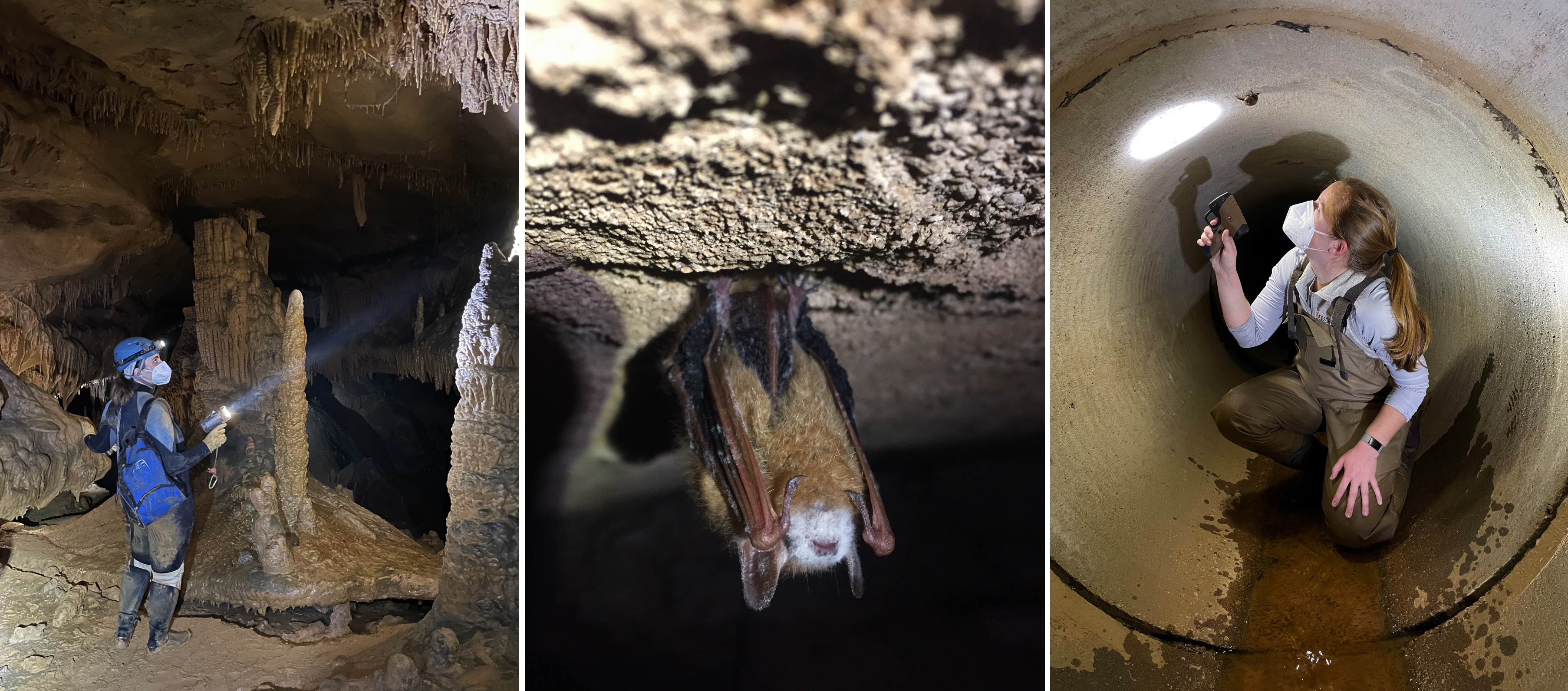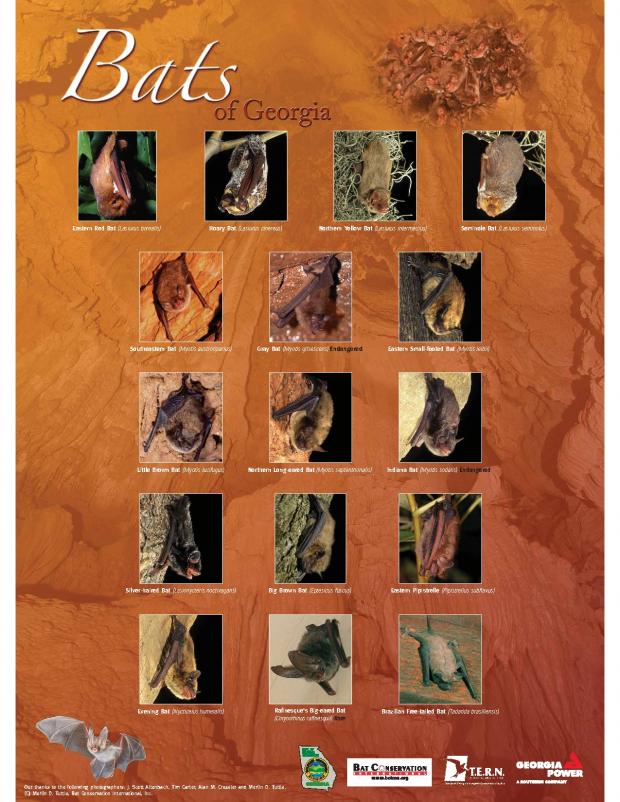bats
Bat Roost Monitoring
Georgia DNR is looking for your help to monitor summer bat roosts across the state. This project involves counting bats exiting roosts at sunset. Think you can help? Keep reading!
NEW this season. We have removed our counting season windows. Feel free to count your bat roost as many times as you like each season! We’re trying to learn more about our bats activity periods so more counts will help.
Bats may use a variety of structures for roosting, both man-made and natural. Here are some examples:
Georgia Bat Survey Guidance
When do I need to conduct a survey?
Survey requirements vary depending on the type of project and required permits. Projects within the potential range of the Indiana bat (Myotis sodalis), gray bat (Myotis grisescens) or the northern long-eared bat (Myotis septentrionalis) may require a survey.
Georgia's Anabat Acoustic Survey Volunteer Project
 
Georgia is participating in two volunteer-based, nationwide acoustic survey efforts to collect long-term data about bats.
The state is home to 16 species of bats. All of them eat insects exclusively and use echolocation to navigate, communicate and find food. Echolocation calls can be recorded and used to identify bats.
Bats in Your House?
Don’t panic. Most situations can be handled by the homeowner. Bat Conservation International has step-by-step instructions for removing a single bat from your home. If you need to exclude a colony of bats from a structure, follow these guidelines based on recommendations from BCI.
Bat Houses
Want to evict bats from your house without leaving them homeless? Or maybe you just want to attract bats to your yard for some natural pest control? Put up a bat house!
General Bat House Recommendations
Design: Be sure you have the right design. Bat houses should have ¾ inch wide roosting chambers, open bottoms, rough surfaces, vents, solid roofs and landing pads. A variety of designs exist on the market and more information about building or buying your bat house is below.





















